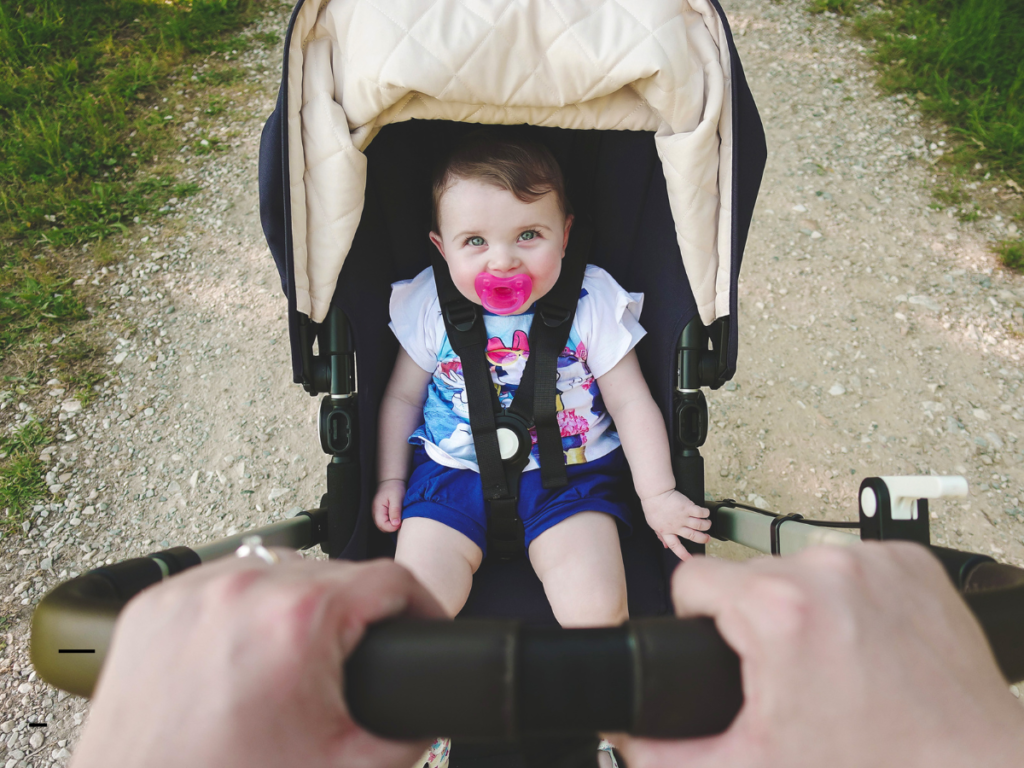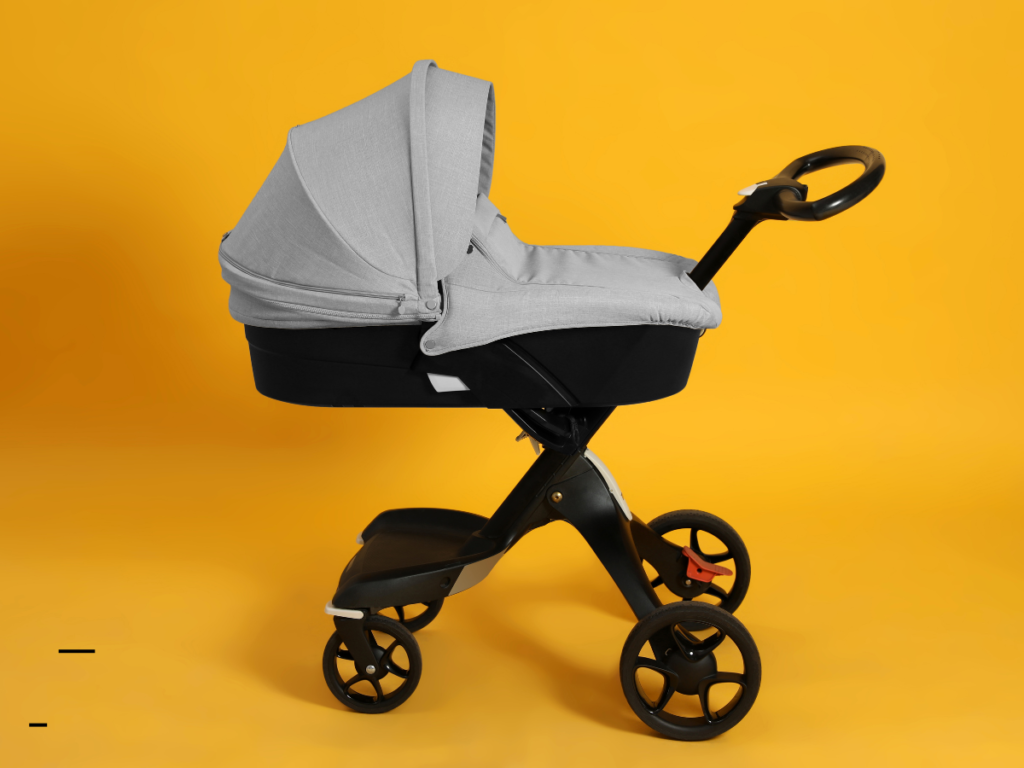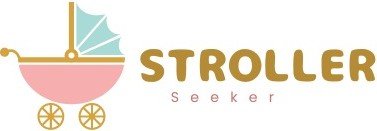As a mom or dad, you will surely want to protect and keep your baby comfortable, and one of the aspects you should keep in mind is the appropriate head support when your child is placed in a Double Stroller. Certainly, they will need special protection, especially their heads and neck, as the muscles in these areas are still weak in babies (or young infants) when they are seated down or lying flat. Also, without proper head support, your baby may feel uncomfortable or develop other possible health risks when you go out with them.
Fortunately, most of the strollers are furnished with adjustable head support and padded lumbar support to cater to such needs. You can avoid straining these muscles and causing headaches or discomfort in your child by ensuring that their proper head and neck positions are maintained.
If you are quite excited to discover the best way how to select the most appropriate stroller for your baby in terms of head support, continue scrolling and find out key characteristics, recommendations, and specialists’ considerations that will not let you down.
Why Head Support is Crucial for Babies in Double Stroller

For any new parent who is in the market for a stroller, probably one of the most significant areas that a lady looking to acquire a stroller ought to pay attention to is that of the head of the baby. For the first few months, babies do not have enough strength to hold their own heads while resting, which is why they are still developing their neck muscles. A baby that is not well cushioned around the head and neck area could either be uncomfortable, have a bad pose, or even get hurt while being carried in a stroller.
Proper head support in a double stroller helps to keep the baby’s head in a stable position, reducing the risk of head flopping or rolling, especially during bumpy rides. This treatment incorporates the head and the neck, aligning with healthy spine space growth.
This knowledge will equip one with insight and a broad understanding that will assist them in making the right decision regarding the choice of stroller that meets the baby’s requirements, considering head support. After which, the next sections will explain the key areas that help in selecting a stroller that provides a good alignment of the head. Similarly if you want to explore How To Open A Graco Stroller Stroller in 4 Simple Steps then read this blog.
Features to Look for in a Double Stroller with Head Support
When choosing a baby double stroller that offers adequate head support to the child, one should keep in mind a few factors. These features ensure that every shape, ride, or size of the ride is comfortable and safe for the baby regardless of the ride’s terrain and duration.
Adjustable Headrests
One of the most essential features that you should consider is whether the double stroller has an adjustable headrest. It makes it easier for the stroller to advance along with your baby in such a way that the appropriate amount of head and neck support is provided. There will always be times when the headrest is not placed correctly, not because of the position but because of the stage of your child’s development and needs.
Padded Inserts and Cushions
Make sure the strollers have well-cushioned inserts or paddings. This doubles up comfort, especially where the baby’s head is; however, it provides moderate and soft support. The design gets better with the liberal use of padding in thickness and quality to hold the baby’s head in position without being overbearing.
Reclining Functionality
Choosing the best double stroller with multiple reclining seating functionalities for babies ensures a perfect head and neck support position for infants and newborns. A newborn absolutely needs the stroller angle to be fully reclined, where the spine and head of the infant can be lying straight. Thus, the feature enhances safety and comfort.
Ergonomic Design and Structure
In a baby stroller that is ergonomically designed, the head and neck will also be supported within the appropriate confines without harming the child.
Secure Harness System
Secured with a harness system, it ensures your baby stays securely in place, not moving around a lot to protect the head. Choose the double stroller with a 5-point harness that holds your baby securely while still providing comfort. This is especially important for active babies or during bumpy rides.
Breathable and Supportive Materials
Headrest and padding materials of the stroller need to be breathable as well as supportive. Breathable materials, to help prevent overheating and firm, yet supportive materials to ensure their head stays flat. This mix is essential for both comfort and safety on long rides.
Types of Strollers and Their Head Support Options

It is worth mentioning that depending on the stroller type, different levels of head support are embedded into it and this is important to determine at which age and for what purpose the baby will benefit from such a stroller. Let’s figure out the most popular types of strollers in terms of neck and head support for your baby.
Lightweight Double Stroller
These are super easy to maneuver and are best for travels or short trips. On the other hand, these strollers are generally less supported at the head due to their minimalism. Though that can work well enough for older babies to toddlers who have the most neck strength, it might not be ideal for newborns (unless they come equipped with additional padding or headrest options). They are also great for those on-the-go errands, but they may not be the best option for more extended, rougher rides.
Full-Sized Double Stroller
Full-sized double stroller usually offer more head support because of the way these are built. However, they are usually equipped with adjustable headrests and sometimes reclining seats or extra padding. That makes them a fairly good choice for newborns or younger infants if you are looking to take advantage of the additional support provided for their heads and necks.
Full-sized strollers are much more versatile because they give parents the ability to adjust their child’s seating as he or she grows. They are durable, providing longevity to accommodate longer rides and more challenging surfaces while still keeping comfort and safety as priorities.
Jogging Double Stroller
These are perfect for those parents that either want to run or do some sort of physical activity whilst taking their baby along. These strollers often have additional cushioning and harder harness systems to keep the baby in place. Although they are great for keeping your baby safe in a bumpy car ride, be sure to select a model that provides enough head support for the younger babies who may not yet have neck control.
While they do have a solid construction to keep the head stable, you should look for those models that also feature neck support if your little one is still an infant.
Travel System Double Stroller
A travel system consists of one car seat and one stroller to simplify the process of transferring the baby from the car to the stroller. They usually offer great head support, especially when the car seat is utilized on younger children, who may be too young to have an upright back. A car seat is primarily designed to maintain head and neck positions; thus, head protection is ensured for very young children. For busy parents, travel systems are best as they are easy to use and have peace of mind with effortless head protection. These strollers also bring a lot of bonus as they can be used from babyhood up to the toddler stage.
Convertible Double Stroller
It is a general stroller where you can make use of various setups where they are able to suit babies throughout numerous stages. These are typically strollers with reclining seats and the ability to adjust the headrests, which makes them appropriate for newborn babies who require lots of neck support.
It is this functionality with multiple stages that makes it an investment as a stroller that will help you out for years till your little one doesn’t need head support any longer. Convertible strollers are also budget-friendly as there is no need to purchase new stroller when your kid is in the growing age.
Age-Based Guide to Choosing the Right Stroller for Head Support

In finding a double stroller for your baby, it is important to consider factors such as age and the appropriate period of development. It is important to understand that there are different developmental stages and each stage has a different and specific need for the head and neck support, utilizing the right stroller will provide the best support from infancy into childhood.
Newborns (0-6 Months)
As for babies, in this case, head and neck support is critical because these young babies have not developed the ability to support their heads. When considering strollers for this category, the most important feature is the separate adjustable full recline on the stroller, supporting the baby’s spine and neck perfectly. Also, make sure that the headrest has additional support or a stroller that allows you to attach a car seat with proper head support. There is a need to make sure that the stroller is one that will provide adequate head positioning with every trip in order to minimize the chances of discomfort or injury.
Infants (6-12 Months)
Children at this point are starting to develop more strength and control over their heads and necks but still need a great amount of assistance. A semi-reclining (But not fully reclined) stroller seat is usually the best alternative; this way, the baby is more sitting, but he can still rest his head when it’s necessary. Strollers with adjustable headrests and harness systems are perfect for this age, allowing some movement while continuing to protect the child. Make sure that the stroller will continue to support your baby’s head properly on extended rides and while napping.
Toddlers (12+ months)
When a child reaches the twelve months stage, the muscles on the neck, at which time the child can sit and remain upright for prolonged periods and hours. Some strollers will be useful where a toddler does need to use something to rest the head on but does not need maximum support. The strollers that are available allow them to use thick reclining seat backrests, which help them to take a nap, but still thick high seat cushions to support them while sitting. At this stage, it is more about striking the right mix of support and comfort for younger and more active children during longer-distance trips for them.
Consider these age-based guidelines as you select the best stroller for each phase of your infant’s development. Here, we will move on to the safety standards and certifications necessary if you wish to give your child a stroller that can cover their head properly.
The ability to draw insights from the baby’s age will in turn help you choose the right stroller which will cater to your baby’s changing needs. Next, we will consider the safety standards and certifications that should be taken into account when selecting a stroller and its head support mechanisms.
Safety Standards and Certifications to Consider
It is very crucial to ascertain that any double stroller with adequate head support conforms to specific safety standards and criteria. These certifications assure the parents that the stroller has passed strenuous tests regarding safety features, and this is very comforting. In the absence of these verifications, there is a possibility of buying a product that would not perform its purpose of adequately protecting the baby’s head and neck during use.
One of the foremost certifications which one must check in the first place is the Juvenile Products Manufacturers Association (JPMA) certification. Every product with this type of certification has passed rigorous safety evaluations, for example, head support, stability and harness tests. A stroller that is in JPMA ticks doesn’t compromise on the neck and head support of your child therefore it is a safer option.
Yet another important safety certification that must be highlighted is the ASTM standards (American Society for Testing and Materials). These strollers meet the required ASTM standards after thorough examination including appropriate reclining abilities, proper harnessing of the child and padded head supports. It is important to check this certification since it shows that the stroller conforms to the global safety regulations.
Lastly, before purchasing any stroller, it’s important to check for safety recalls. Some models may have been recalled due to issues such as inadequate head or neck support, faulty harnesses, or general instability. The Consumers Union, in a very simple manner, provides up-to-date recall information. The absence of such recalls is a bonus that calms the thoughts of the parent that he is getting something safe in terms of how his baby is going to be.
In conclusion, as long as you purchase a stroller that meets the above safety confirmation, you have peace of mind that your baby will be securely supported. Next, we’ll look at practical ways to test a stroller’s head support before making your purchase.
Testing a Stroller’s Head Support Before Purchase

Testing Inside the Stores
While you are in a place where you can find a wide variety of strollers, use the opportunity to assess the stroller in completion. Recline the seat fully and check how the headrest is settled on the baby’s head, especially when asleep. Try to compress the foam but only to test for its softness and supportability without being uncomfortable to the wearer. Then, the headrest should be moved in order to test the ease of adjustment and whether the baby’s head is restrained effectively in all the stages of growth.
Online Research and Reviews
When buying online, it is also important to read customer reviews. If you are looking for useful opinions on whether the head support features work, it can be great to ask parents who have already used that specific stroller. Find reviews that talk head and neck support when babies are new and infants. Look at videos or images of the stroller being used to get a visual idea of how good the headrest is. You should also compare models and their specifications to figure out which stroller offers the best support.
Either by testing the stroller in-person or good research of buyer reviews you can feel more confident in picking up babies head support friendly stroller. We will discuss common mistakes in choosing a stroller with great head support in the next section.
Common Mistakes Parents Make When Choosing Strollers with Head Support
Prioritizing Aesthetics Over Functionality
It’s easy to get drawn to a stroller’s appearance or trendy features, but the main focus should be on practical aspects like head and neck support. A stylish stroller won’t matter if it doesn’t offer the necessary protection for your baby’s well-being.
Many parents are attracted to flashy designs or celebrity-endorsed products, but these features often come at the cost of vital safety elements. Always prioritize functionality, especially when your baby’s comfort and health are at stake.
Choosing a Stroller Without Proper Reclining for Newborns
Newborns require fully reclining seats to maintain spine and head alignment. Opting for a double stroller that doesn’t recline properly can cause the baby’s head to slump forward, leading to discomfort or health issues due to poor neck support. Many strollers designed for older babies may not be suitable for newborns, which can create serious safety risks. Always verify that the stroller is appropriate for your baby’s age and provides the correct reclining options.
Overlooking the Importance of Adjustability
Babies grow quickly, and a stroller that doesn’t offer adjustable headrests or seats may not continue to provide adequate support as your baby develops. Ensuring that the stroller can be adjusted as your baby grows will provide long-term safety and comfort. Adjustable features also extend the stroller’s lifespan, making it a better investment over time. Without this adaptability, you may need to replace the stroller sooner than expected, adding unnecessary costs.
Conclusion
Head support is very important for the safe and comfortable positioning of your newborn in a stroller during his first months. Whether that be making sure the stroller reclines for newborns or searching out features such as adjustable headrests, padded inserts, and more, keeping the focus on head and neck support is important. All double stroller are very different, so you will have to choose the one that best meets the needs of your baby and you as parents at every stage of development.
Most importantly, you will want to prioritize safety certifications like JPMA and ASTM, as these validate that a stroller meets certain standards for head support. Remember to try the stroller before buying or read reviews to ensure that it protects and supports your baby’s head.
By keeping the above-mentioned factors in mind, you can select the right stroller that provides enough head support while ensuring your child is safe and comfortable in their crucial first years. Happy stroller shopping!


